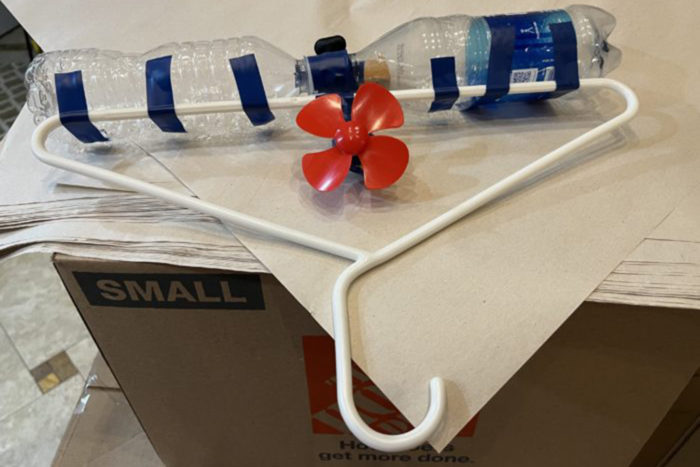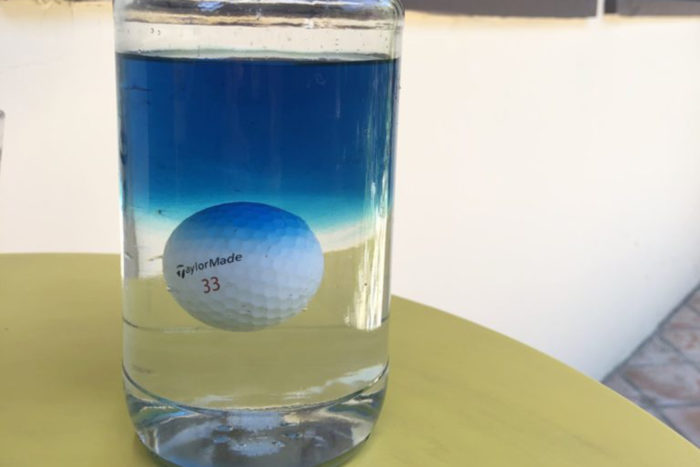
Project ROVe: Exploring New Depths with ROVs
By Andrea Schmuttermair, TASAA ROV Education Coordinator
Some might say exploration is in my blood. My grandparents immigrated to the US from Germany over 50 years ago, and instilled in me a sense of adventure. From exploring nature and the ocean near my home to traveling and teaching around the world, exploration continues to drive me. Which explains why remotely operated vehicles (ROVs), tools for deep ocean exploration, have been following me on my educational journey for the last eight years (you can read more about my history with ROVs in this blog).
This past year, as part of my TASAA NOAA Fellowship, I spent 25% of my time developing an independent project and naturally, ROVs were the first thing that came to mind.
What began as a rough idea to create a cohort of Teacher at Sea Alumni who wanted to incorporate ROVs into their classrooms, turned into not only a cohort of amazing alumni educators, but two course offerings, one virtual course and one in-person, hand-on course, for which alumni could apply for graduate credits.
You could say that my independent project grew far beyond what I originally imagined back in August 2021. With the added pressures of teaching during the pandemic, I wasn’t sure anyone would be interested or have the time to undertake this professional development. So I started out with a survey to our alumni to gauge interest in underwater robotics. The answer was an overwhelming “YES!” and as a result, we were able to put together an enthusiastic group of fourteen alumni for the very first TASAA ROV cohort.
We launched the Project ROVe: Introduction to ROVs course in January 2022 and for the next six months, alumni learned about underwater robotics both synchronously and asynchronously via an online platform. Each month, we explored different themes related to ROVs, including engineering design, electricity and circuits, and buoyancy.
Participants received an “at-home kit” consisting of materials to build a mini-ROV, create circuits, and other hands-on activities we would complete throughout the course. They also participated in virtual competitions and completed readings from the textbook Underwater Robotics. There were guest speakers each month, including ROV pilots Gabby Inglis and Jess Sandoval. I also offered optional virtual office hours to help support alumni throughout the course.
Creating a cohort where alumni could connect and collaborate has been one of the core components of Project ROVe and a longstanding goal for the Alumni Association. With the course being online, it was important to create opportunities for alumni to come together on a regular basis. We did this through our regular virtual meetings, which took place 1-2 times each month. These were opportunities for folks to get to know each other, discuss ideas, ask questions, support each other and most importantly, HAVE FUN.
Teachers who participated in Project ROVe: Introduction to ROVs were eligible to take the Project ROVe: Design and Build course—an in-person, ROV building workshop. This year, the workshop took place in July and was hosted at the Mariner’s Museum and Park in Newport News, Virginia. Participants built MATE Pufferfish ROVs over the course of 3 days, working in teams to troubleshoot and design unique ROVs, while discussing plans for classroom implementation.
Alumni also had the opportunity to explore the Mariner’s Museum and Park, home to the USS Monitor Center and the largest maritime library in the Western Hemisphere. What perfect place to dive into the topic of ocean exploration!
The workshop culminated in a day spent testing and adjusting ROVs for buoyancy and learning to operate the controls. We ended the final day in a friendly competition where participants had to complete ROV simulations such as removing dead fish from an aquaculture pen and picking up an abandoned fishing net.
Coming together in-person to build ROVs provided teachers with opportunities to learn together, collaborate, troubleshoot, and build upon the relationships formed in the online Introduction to ROVs course. Throughout both courses, teachers got to be students again, learning and going through the engineering design process with successes, failures, and opportunities for revision- a humbling reminder of vulnerabilities students might feel in their own classrooms.
When I first began building ROVs with my students, I wished I had the opportunity to learn about various ROV concepts and connect with other educators working with ROVs. Activities that involve novel technology and equipment can also be intimidating, both because of the time involved and the cost. Learning how to teach something like ROVs is a big commitment to take on outside of the normal day-to-day teaching responsibilities. The Alumni Association hopes to fill that gap. When alumni join a Project ROVe cohort, they are not only gaining the knowledge and skills they need to build ROVs with their students, they are gaining the confidence, a support network, and connections with like-minded educators who can support them as they implement ROVs into their curriculum and ultimately lay the grounds to inspire the next generation to be stewards of this amazing blue planet.
If you are a NOAA Teacher at Sea Alum and are interested in getting more information and/or joining the next Project ROVe cohort (starting Fall 2022), please take this survey by August 30, 2022.

Alumni show off their completed ROVs after pool-testing them at the Project ROVe: Design and Build Workshop in Summer 2022.
 Andrea Schmuttermair sailed on NOAA Ship Oregon II for a groundfish survey in 2012 and again in 2015 an alum on NOAA Ship Oscar Dyson for a pollock survey. In 2021, she joined the Teacher at Sea Alumni Association to pilot a new program—the Teacher at Sea Alumni Association NOAA Fellowship. After Andrea’s fellowship concluded, she stayed on with the Alumni Association to continue engaging alumni in remotely operated vehicle (ROV) professional development as part of the Project ROVe program she created.
Andrea Schmuttermair sailed on NOAA Ship Oregon II for a groundfish survey in 2012 and again in 2015 an alum on NOAA Ship Oscar Dyson for a pollock survey. In 2021, she joined the Teacher at Sea Alumni Association to pilot a new program—the Teacher at Sea Alumni Association NOAA Fellowship. After Andrea’s fellowship concluded, she stayed on with the Alumni Association to continue engaging alumni in remotely operated vehicle (ROV) professional development as part of the Project ROVe program she created.








